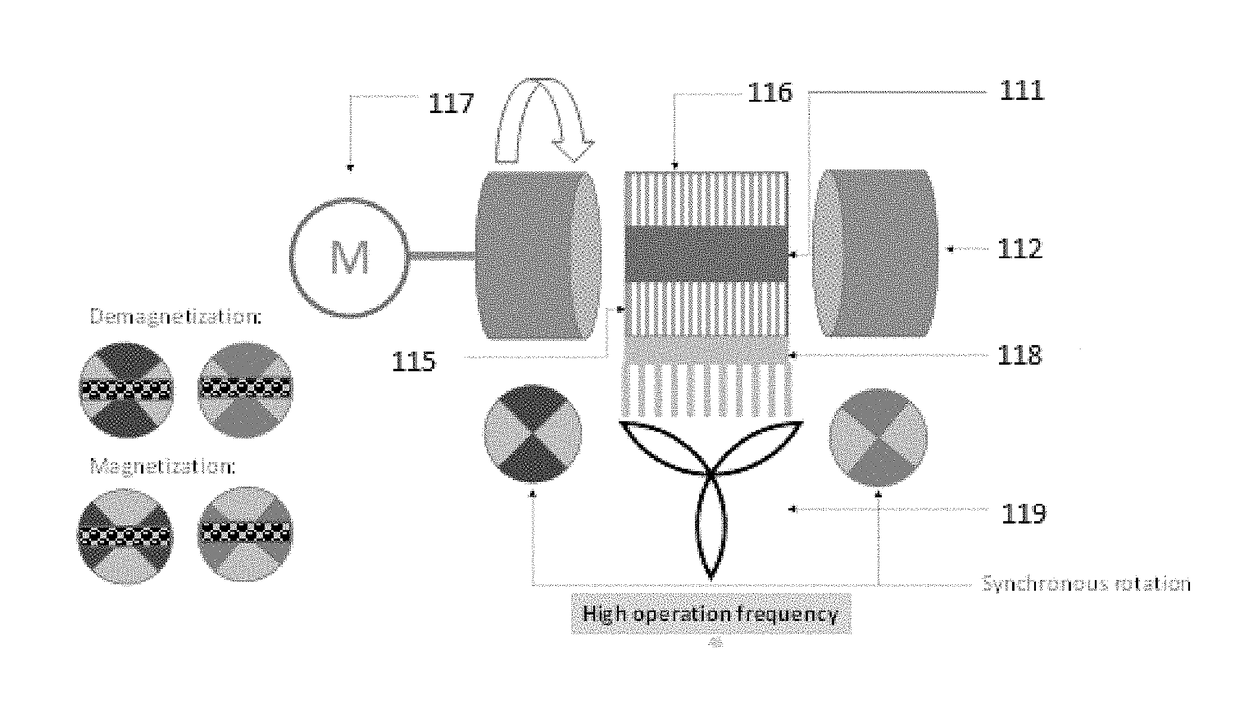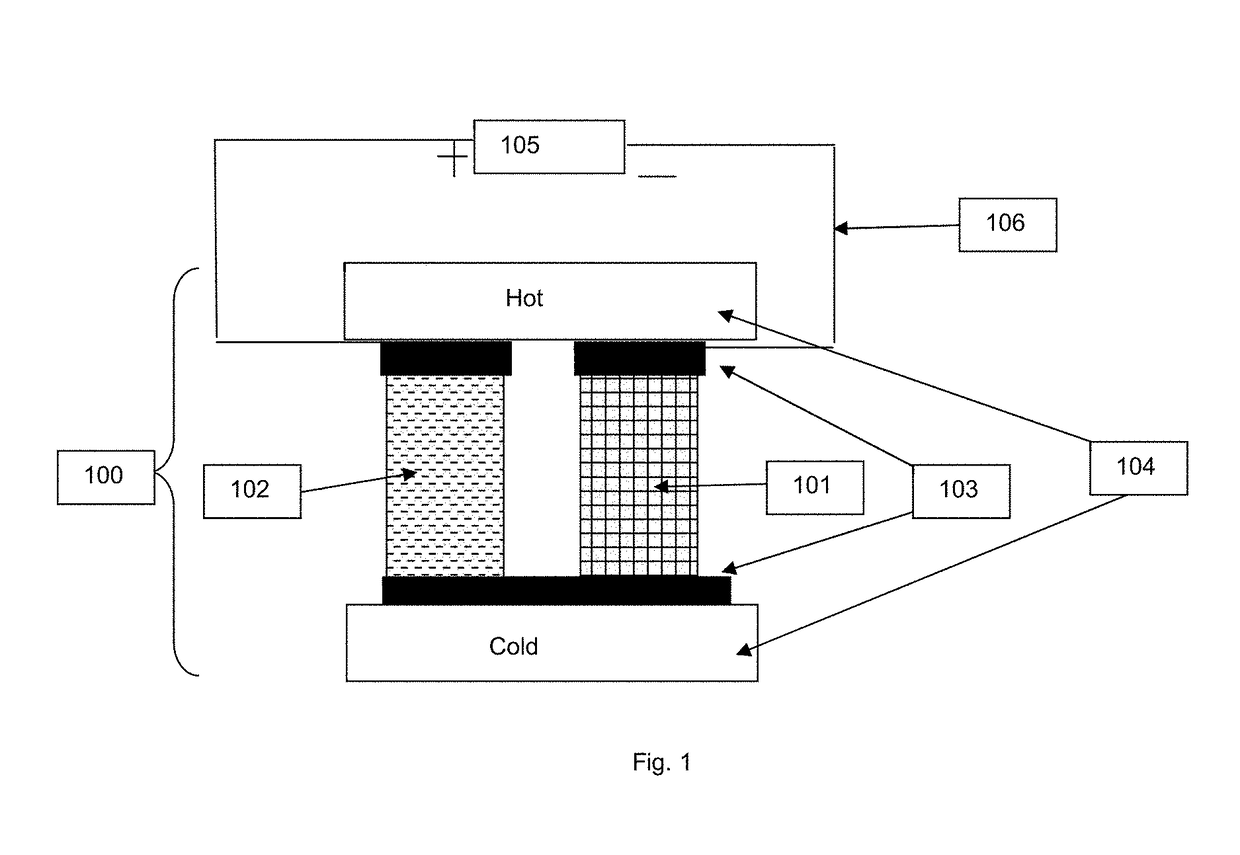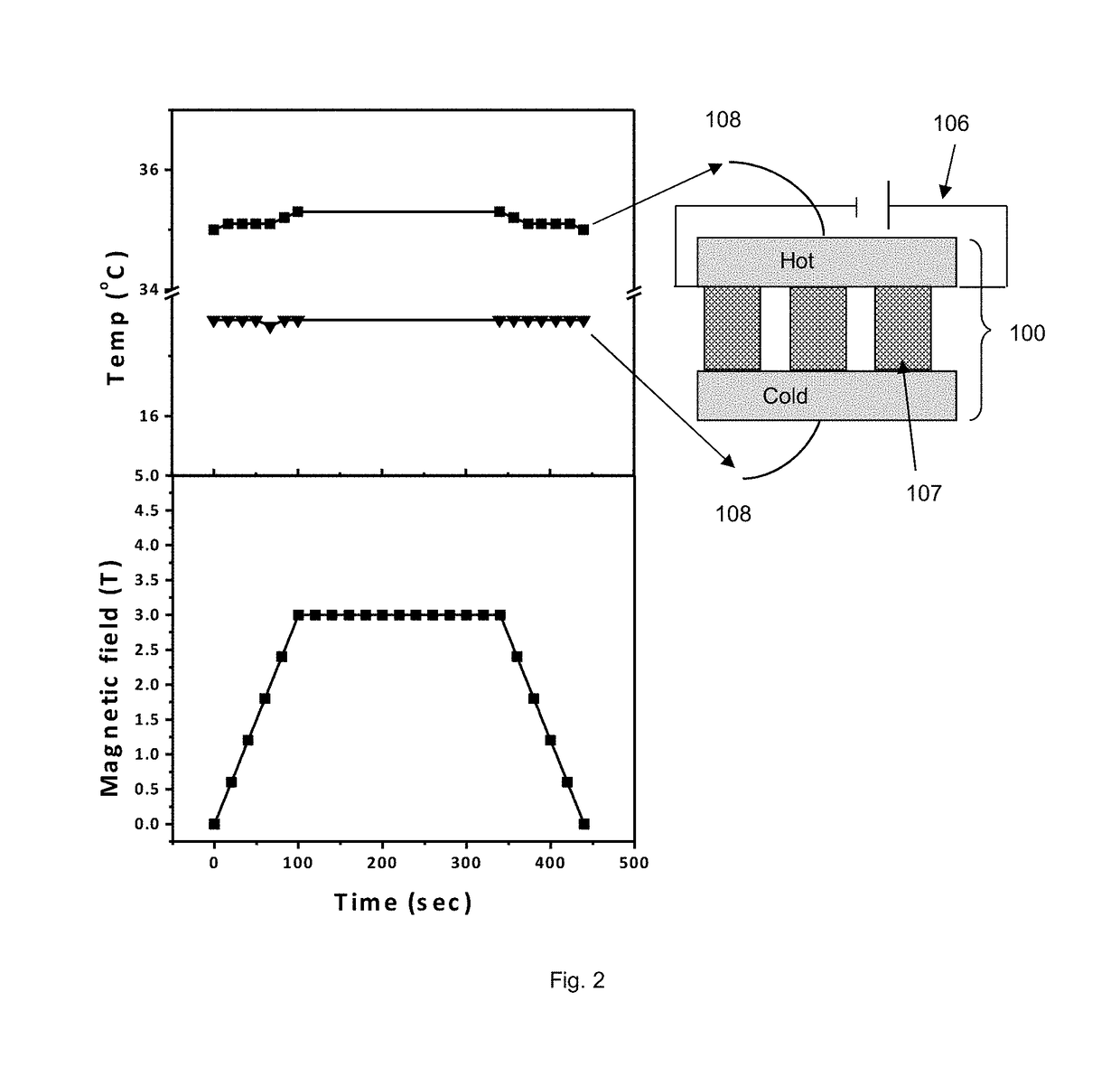Solid state cooling device
a solid-state cooling and cooling device technology, applied in the field of cooling devices, can solve the problems of poor efficiency of current tec technologies, adverse environmental impact, and the development of magnetic coolers that can span a large temperature range, so as to increase reduce the magnetic field force, and increase the magnetic field.
- Summary
- Abstract
- Description
- Claims
- Application Information
AI Technical Summary
Benefits of technology
Problems solved by technology
Method used
Image
Examples
example 2
[0093]FIG. 9 shows the temperature versus time of an embodiment of the invention where the solid state cooling module uses a magnetocaloric composite comprising a magnetocaloric material 113 and a thermally conductive material 114. The module was constructed similar to Comparative Example 1, except the Gd plates 113 were each wrapped with Copper foil 114 and adhered in between the thermoelectric modules.
[0094]FIG. 9 shows the temperature versus time for the device where the figure on the left shows the stabilized temperature fluctuation of the cold side without the magnetic field. The thermoelectric modules are cycled off and on every 8 seconds, causing the cold side temperature to fluctuate from 20.1 C to 21.7 C. When the magnetization and demagnetization cycle is performed on the device using the same procedure as described in Comparative Example 1, the cold side temperature decreases, and fluctuates between 19.7 C and 21.4 C. This shows cooling occurring due to the magnetocaloric...
example 3
[0095]FIG. 10 shows the temperature versus time of the same solid state cooling module of Example 2, except the cycle time is every 10 seconds. The stabilized cold side temperature fluctuates from 21.3 C to 23.3 C. When the magnetization and demagnetization cycle is performed on the device using the same procedure as described in Comparative Example 1, the cold side temperature decreases, and fluctuates between 20.9 C and 23.1 C. This shows cooling occurring due to the magnetocaloric effect, which is made possible only by using the magnetocaloric composite structure as disclosed herein.
example 4
[0096]FIG. 11 shows the temperature versus time of the same solid state cooling module of Example 2, except the cycle time is every 12 seconds. The stabilized cold side temperature fluctuates from 19.7 C to 21.8 C. When the magnetization and demagnetization cycle is performed on the device using the same procedure as described in Comparative Example 1, the cold side temperature decreases, and fluctuates between 19.3 C and 21.5 C. This shows cooling occurring due to the magnetocaloric effect, which is made possible only by using the magnetocaloric composite structure as disclosed herein.
PUM
| Property | Measurement | Unit |
|---|---|---|
| thermal conductivity | aaaaa | aaaaa |
| thickness | aaaaa | aaaaa |
| thickness | aaaaa | aaaaa |
Abstract
Description
Claims
Application Information
 Login to View More
Login to View More - R&D
- Intellectual Property
- Life Sciences
- Materials
- Tech Scout
- Unparalleled Data Quality
- Higher Quality Content
- 60% Fewer Hallucinations
Browse by: Latest US Patents, China's latest patents, Technical Efficacy Thesaurus, Application Domain, Technology Topic, Popular Technical Reports.
© 2025 PatSnap. All rights reserved.Legal|Privacy policy|Modern Slavery Act Transparency Statement|Sitemap|About US| Contact US: help@patsnap.com



